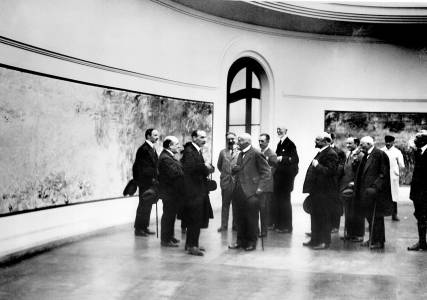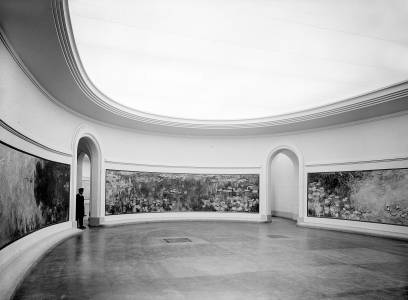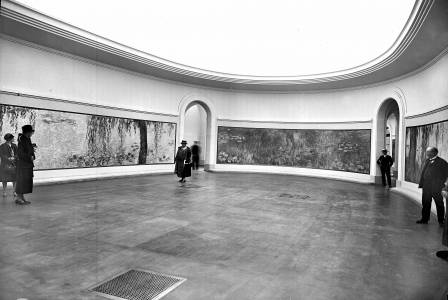Oceanic sensations, in: Golan, 2009, pp. 12—15, 20—21, 33 (dieser beitrag wurde verfasst in: englisch)
eingetragen von Alex Winiger am 16.03.2016, 10:34 (email senden)
From the moment Monet began to work on his Water Lilies in the 1890s, there was a tension between the series conceived as individual commodities meant to be sold and dispersed at will and the series proposed to be seen as an indivisible whole. In 1909, after his principal dealer, Paul Durand-Ruel, exhibited more than forty views of Monet's garden as 'Les Nymphéas: série de paysages d'eau,' critics deplored their imminent dispersal, calling for some benefactor to keep one of the series as a group in recognition of their success as a decorative ensemble. Only in 1914, after his friend Georges Clemenceau, who was then prime minister, came up with the idea of a public donation of the series to the French state, did Monet himself truly begin to think in such ambitious terms. […] The growing size of the canvases, combined with the ravaging effect of a triple cataract on Monet's sight (it was finally operated on in 1923), might have led to an ever looser and larger painterly facture. […] Monet's late project was breaking down a […] dichotomy […] between en plein air and the studio. […]
Monet's stipulation, in the contract he signed with the state on April 12, 1922, that his Water Lilies be mounted on the walls of the Orangerie using marouflage was partly meant to protect the canvases from moisture damage and insure their evenly flat surface. Since Monet's project called for curved walls, marouflage also made it possible to avoid the construction of complicated stretchers for individual paintings. More importantly, however, it functioned as a tacit guarantee that the paintings could not be removed. His demand stemmed not from a concern that they would be shown in some other museum space, as the opportunity arose (for example, in 1937 […]), but to keep them from being relegated to storage in some museum basement.
What [Pierre] Olmer experienced as 'the infinitely soothing and serene' space of a temple, [Jacques-Emile] Blanche described as a place of utmost discomfort: 'The space is cold, too solemn, the walls too white, the vellum too thin, allowing for an irksome light to filter in. There are no seats. The place is infused by a misplaced Hausmannian solemnity… Fuzzy images look even fuzzier when framed in stone.' […]
During the months leading up to the 1937 World's Fair, there was a flurry of articles, editorials, and art columns in such dailies and weekly papers as Beaux-Arts, Comoedia, Marianne, and L'Intransigeant demanding that the state commission murals for the fair from French artists. Yet, […] not a word was uttered on the Nymphéas in the commotion elicited by the preparations for the fair. Monet's name was not mentioned once in the reams of editorials and articles that appeared in the columns of daily, weekly, and bi-weekly papers calling for mural commissions for artists. This silence (except for one demeaning comment made by Robert Delaunay) is baffling. After all, Monet's Water Lilies, trapped in the Orangerie, stood as a prime example of a modern mural installation in Paris. With their pigment having seeped deep since their marouflage info the wall itself (which would in any case have made their relocation a most delicate undertaking), the Nymphéas had even, paradoxically, become the closest example to the real thing — frescoes — as anything produced in France since their unveiling. Nevertheless, whether figurative or abstract, modernist or all'antica, painted on or merely affixed to the wall (as the great majority were), the murals on display at the 1937 Paris Exposition still managed to convey a modicum of 'mural effect' that bespoke architectural stability — precisely what the ever-evanescent Nymphéas acutely failed to deliver.


